In standard apartments of the old type, modern studios do not have a dressing room. It is irrational to place things in furniture, so many people independently build storage systems in the corridors.
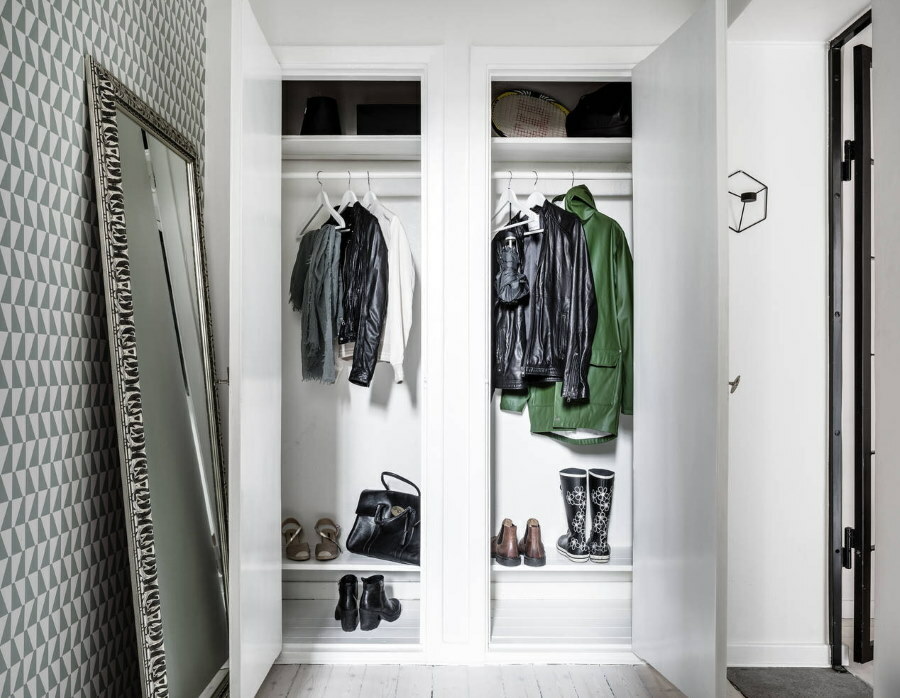
A walk-in closet in the corridor helps to neatly place all the necessary things and relieve the rest of the rooms.
Pros and cons of the dressing room in the hallway
Content
- Pros and cons of the dressing room in the hallway
- Varieties of dressing rooms
- Corner dressing room
- With swing doors
- Built into a niche
- Choosing the size of the dressing room for the interior of the corridor
- Small walk-in closet options
- Materials for making the facade of dressing rooms
- Particleboard and MDF
- Natural wood
- Mirror
- And others
- Internal filling options
- Shelves
- Boxes
- Hangers
- Photos of dressing room design ideas in the corridor
- Video: DIY built-in mini-wardrobe
- Photo of wardrobes in the corridor
It is possible to place a lot of clothes and other things in a small area. The corridor is not used much, it is a walk-through room. The dressing room will increase the comfort of living, create the necessary conditions for a quick search for things, dressing. Waste space will turn into useful space.
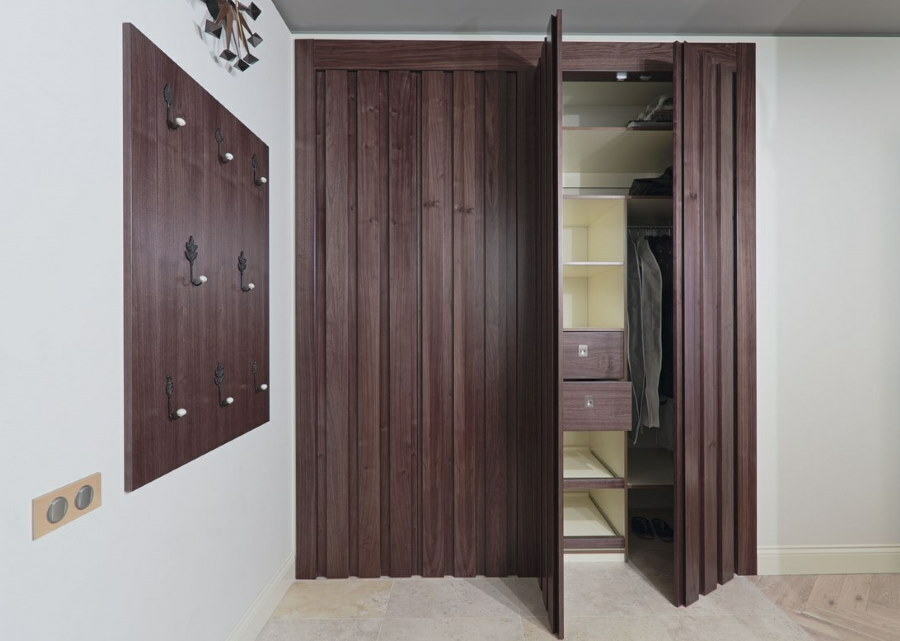
Depending on the size of the room, the wardrobe can be roomy or miniature, with different content and a variety of designs.
The downside is that it will be possible to separate a small space, you will have to think carefully for the rational placement of shelves, drawers, hangers.
Varieties of dressing rooms
Functional storages are distinguished by good capacity, the entire volume of the allocated premises is rationally used. There are various options for shelves, drawers, hangers, fenced off by a facade.
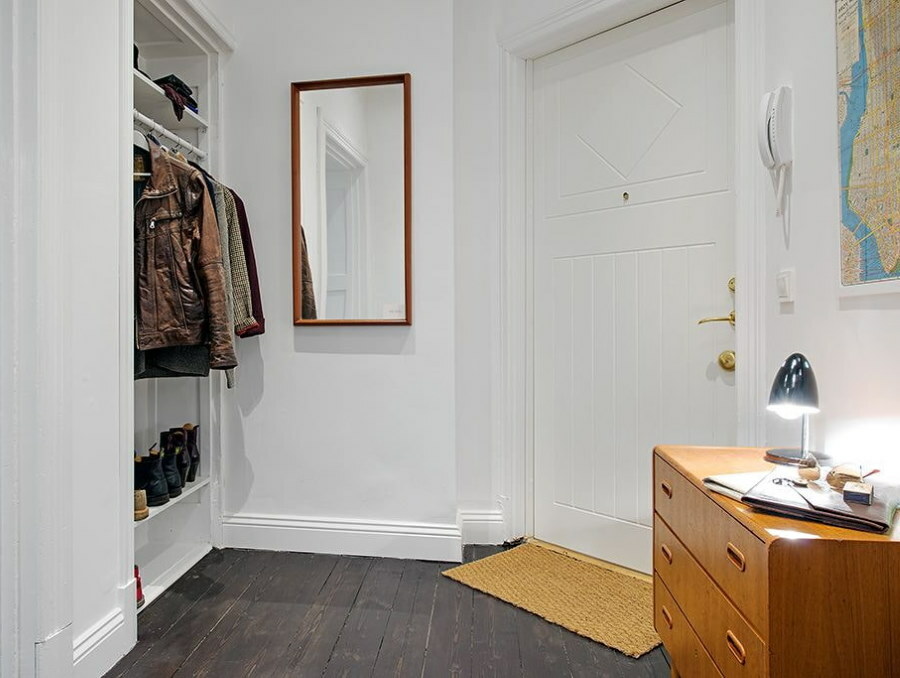
An open dressing room takes up a minimum of space and looks good, but requires perfect order
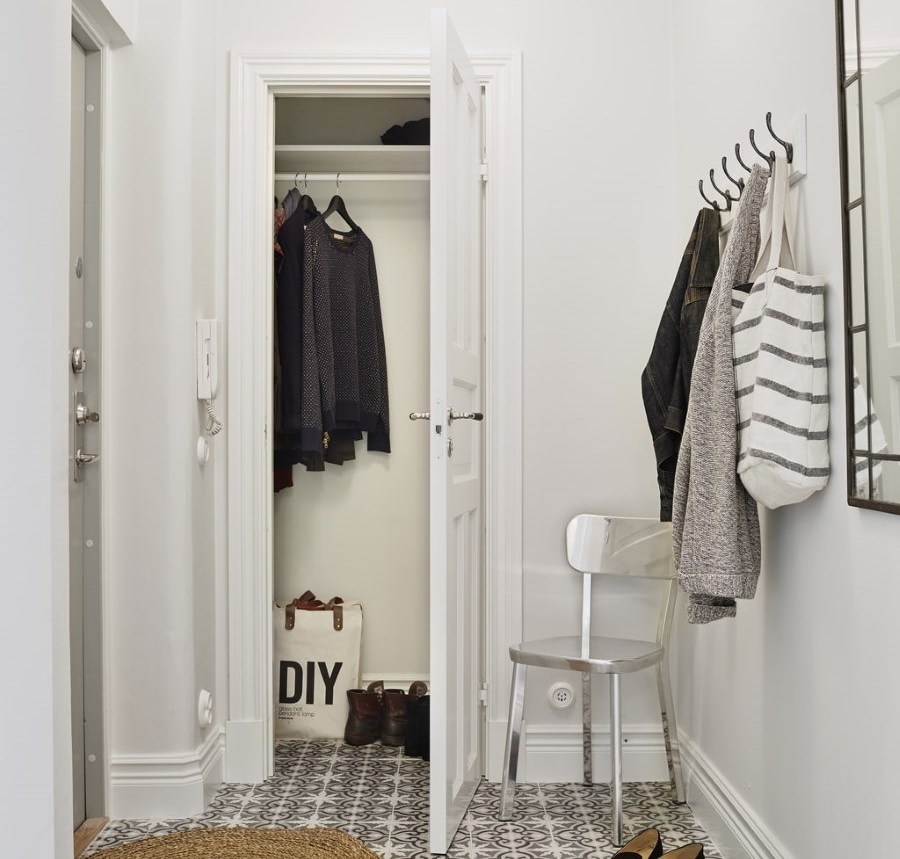
Closed wardrobe allows you to neatly store things, hide them from prying eyes and protect them from dust
Corner dressing room
Often, part of the room is separated between two adjacent walls. A corner walk-in closet in the corridor is the best option for small apartments and studios. They make hull and frame structures. Facades are made of sliding and swing type.
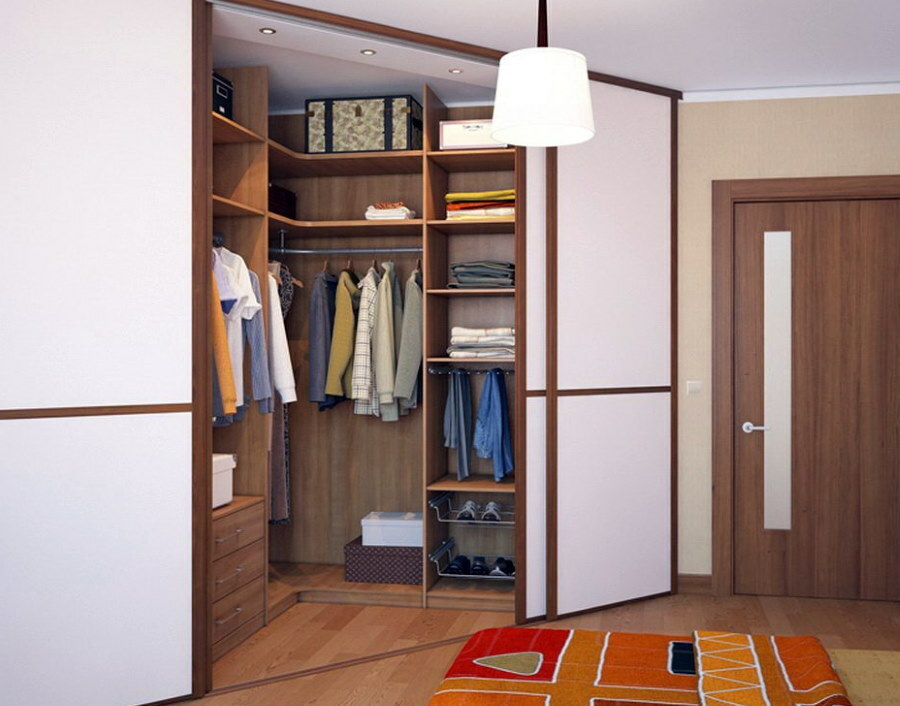
Wardrobes of this configuration allow you to use the corner space as efficiently as possible.
Sliding semicircular designs look stylish, but triangular ones are more spacious. If desired, you can hide shelves, rods, drawers and baskets behind a swing or sliding facade.
With swing doors
In the photo, the types of dressing rooms in the corridor, reminiscent of sliding wardrobes, are complemented with swing facades, when it is not possible to make sliding partitions. An ordinary option that requires a lot of space is appropriate when decorating Provence-style housing. Doors in a romantic style will be an additional accent. In a modern style, they make plain doors with the tone of the walls.
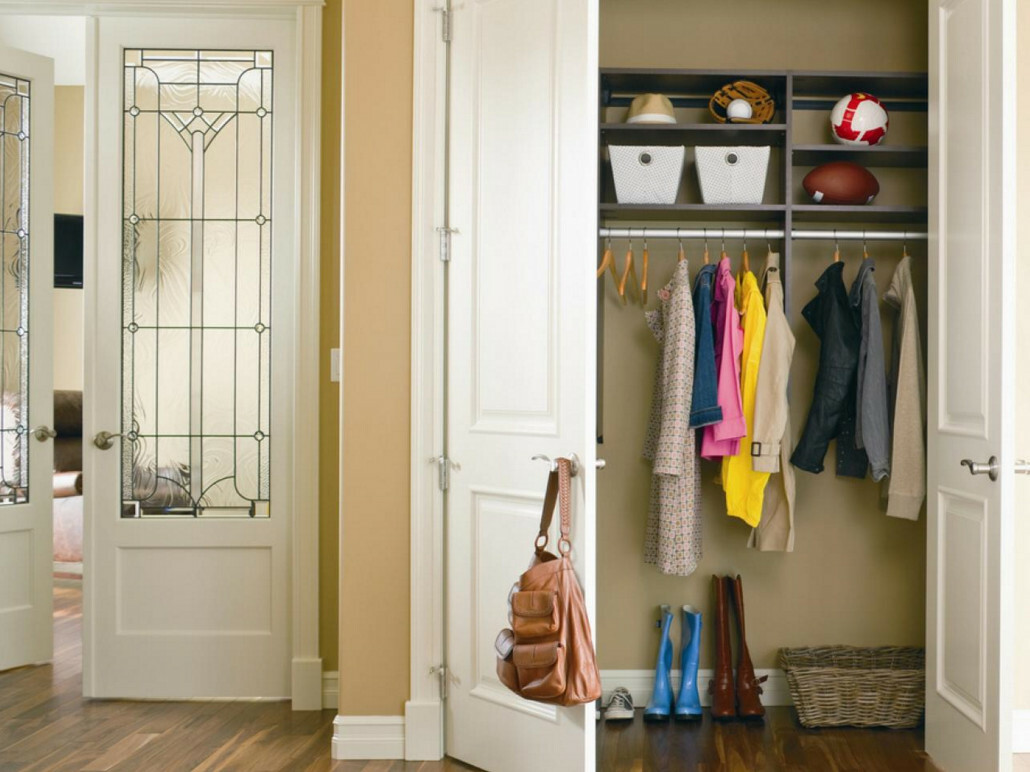
Wardrobe with swing doors can be composed of one or more sections depending on the available space
Built into a niche
Only a large hanger will fit into the small recess. But the space is conveniently transformed. A small dressing room in the corridor will turn into a full-fledged storage system for clothes and bedding. You can supplement the niche in the corridor for the wardrobe with a glass partition, build in the lighting, then a modern touch will appear in the interior, an additional source of light.
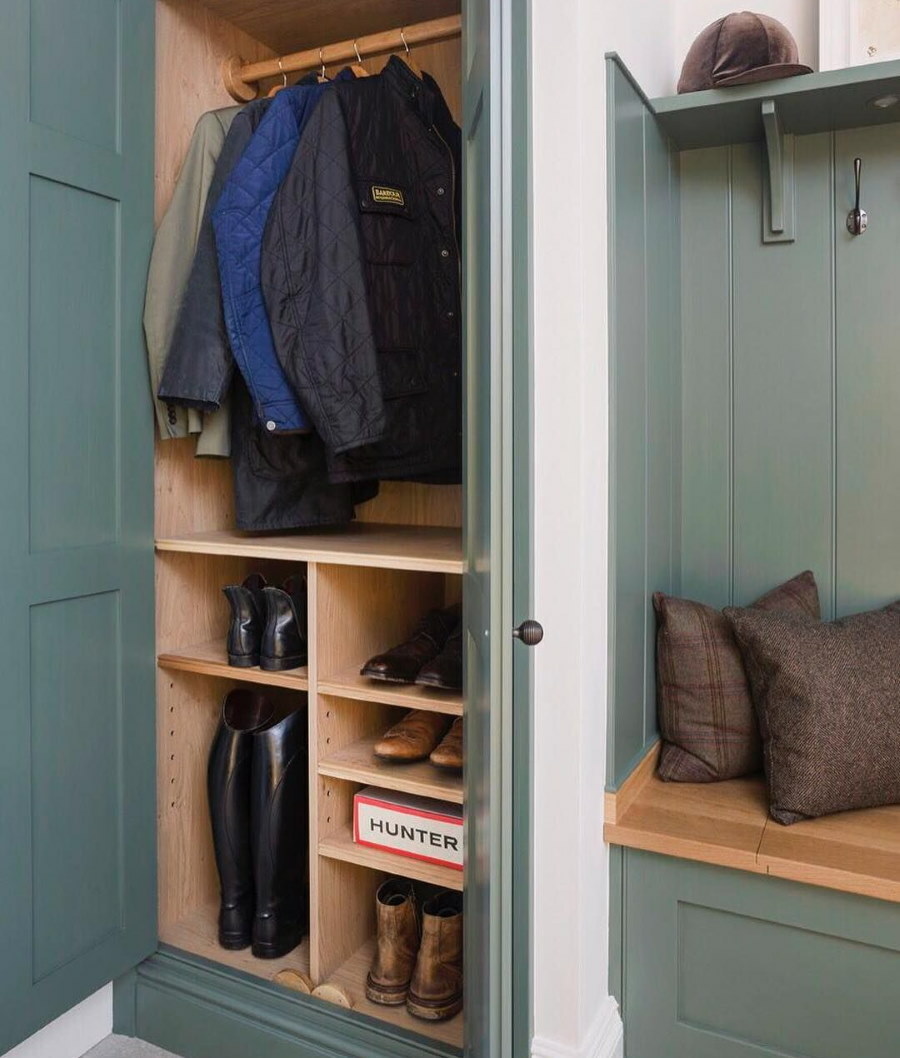
The arrangement of the wardrobe directly depends on the size of the niche. If the recess in the wall is very small, you will have to limit yourself to one compartment for outerwear and several shelves for shoes and small things.
Choosing the size of the dressing room for the interior of the corridor
When the layout allows, a wardrobe for outerwear is installed in the hallway. Then only everyday things are stored in the dressing room, used as a dressing room. In the corridor are appropriate:
- corner;
- semicircular economical;
- elongated structures.
A wardrobe is made in a short square corridor. It all depends on the spaciousness of the room.
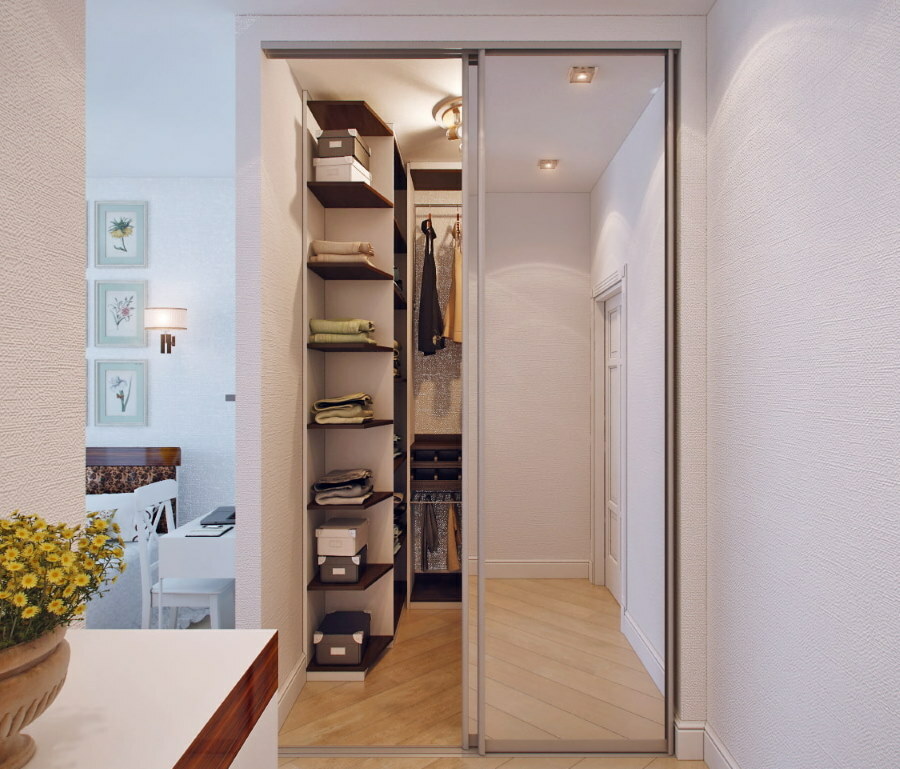
In spacious hallways, the wardrobe can be separated with a light partition and sliding doors can be installed that do not require additional space to open
Small walk-in closet options
They manage to make a small wardrobe in the corridor in the Khrushchevs. Compact storage systems help save space for other furniture. There is no need to purchase dressers, wardrobes in the living room. The convenience of the storage system is that the entire volume is occupied from floor to ceiling. The design is planned taking into account the composition of the family.
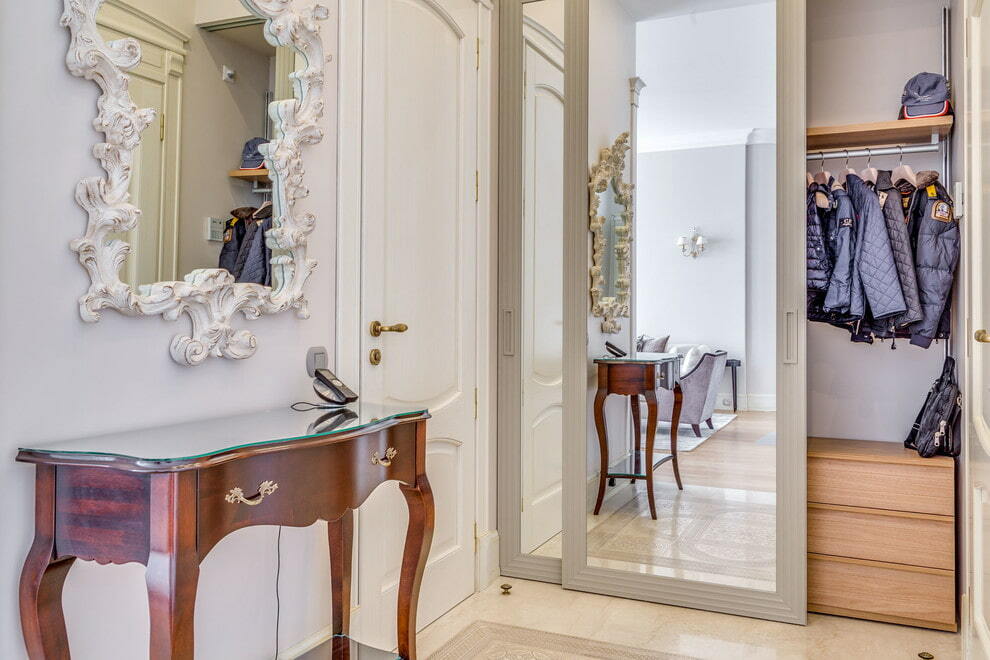
In elongated rooms, the wardrobe is often placed along a short wall.
Materials for making the facade of dressing rooms
Frame frames for partitions are usually assembled from a metal profile or use a dried wooden beam that will not "walk" during operation. Light and aesthetic materials are chosen for the design of the walls and facade slabs.
Particleboard and MDF
Traditional particle boards are laminated, the color is chosen to match the corridor decor. Chipboard plates are an economical design option. The main disadvantage of chipboard is the unreliability of fastening fasteners. You have to reinforce or constantly revise the hinges.
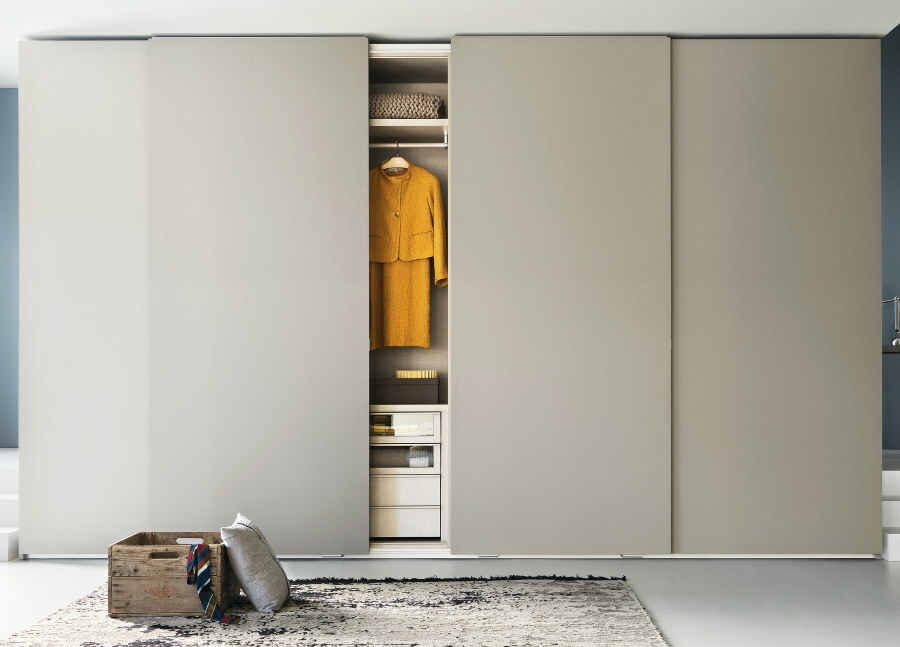
On the basis of chipboard, they usually make smooth facades of a laconic design.
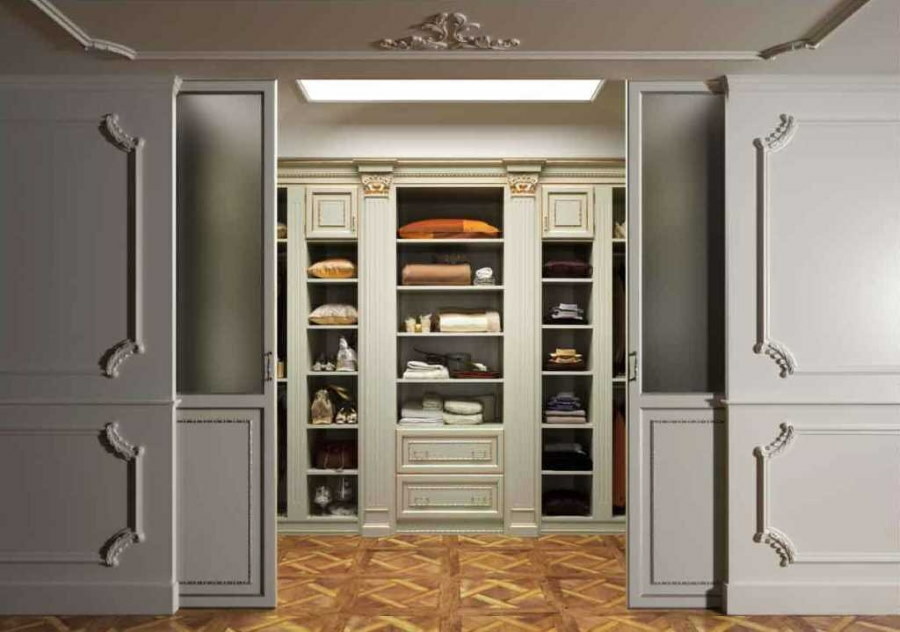
MDF is a more practical and malleable material that allows you to create doors "under the classics", which outwardly practically do not differ from solid wood
MDF is a modern material that lends itself to painting and other types of finishing. The malleable material lends itself to milling, you can create original shapes.
Natural wood
Natural wood is chosen for spacious interiors decorated in a classic style. Massive partitions are installed in dressing rooms, doors are hung on the shelves. Exclusive models of wardrobes are additionally decorated: they are decorated with carvings, inlays, designer bronze fittings.
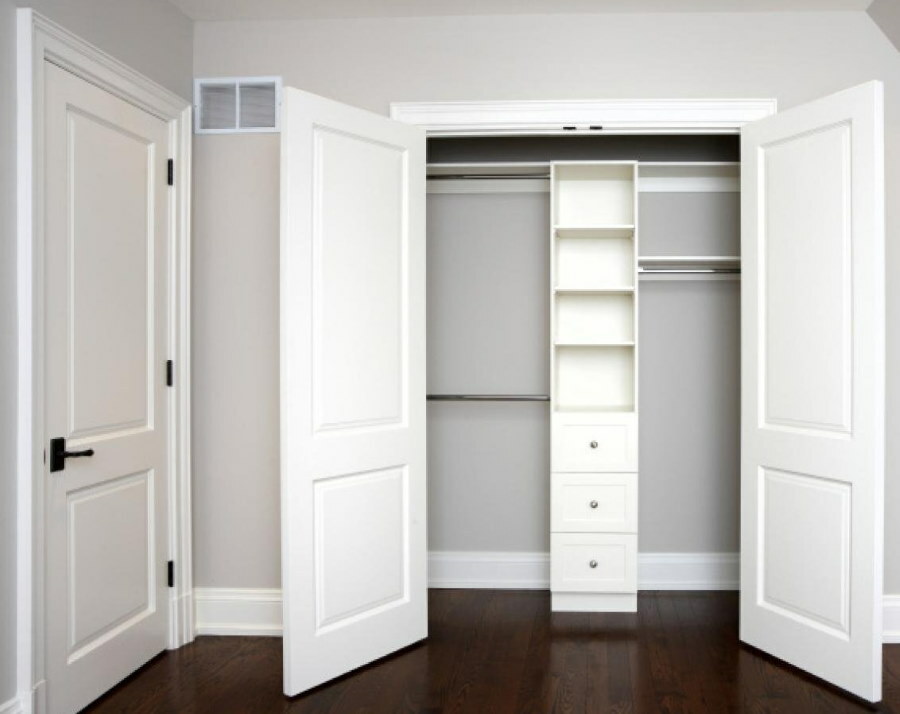
Wood is a fairly convenient material that allows you to make doors of various designs, colors and textures.
Possible budget options from glued panels, varnished, plywood.
Mirror
Large format mirrors, mirrored doors are a thing of the past. Cloths are installed inside dressing rooms:
- L-shaped design;
- in the form of the letter "P";
- corner.
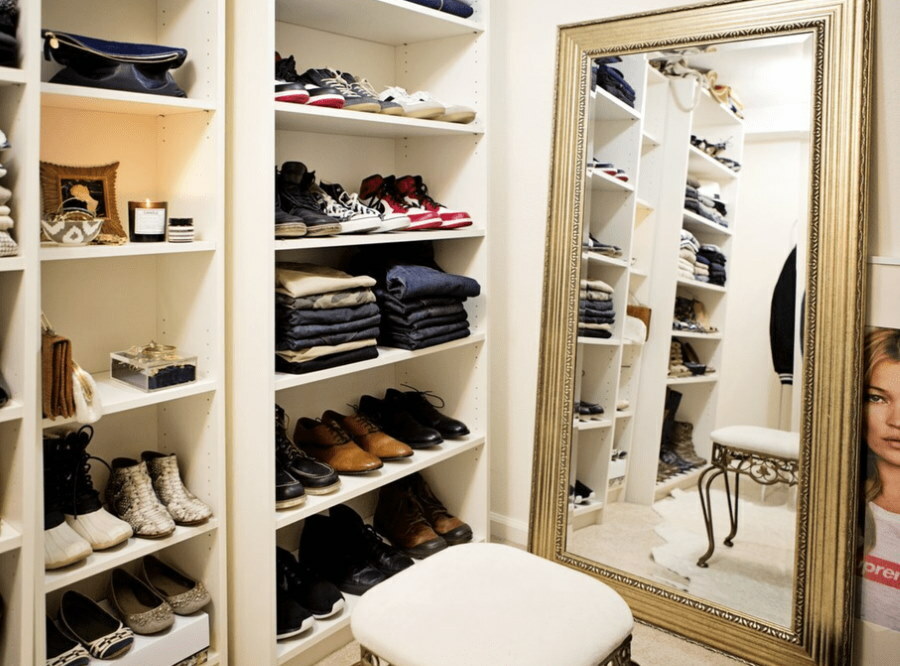
The mirror in the wardrobe should be full-length. Floor models will look very stylish
Reflective surfaces often have a practical function and also increase the illumination of a small room. If the mirror serves as an element for decorating a wardrobe in the corridor, the surface is decorated with original floral ornaments or matte frames.
And others
For shelves, facades, partitions, ergonomic polymers that are resistant to high humidity are used. Such storage systems are not afraid of frequent cleaning. Lightweight plastic is practical and beautiful.
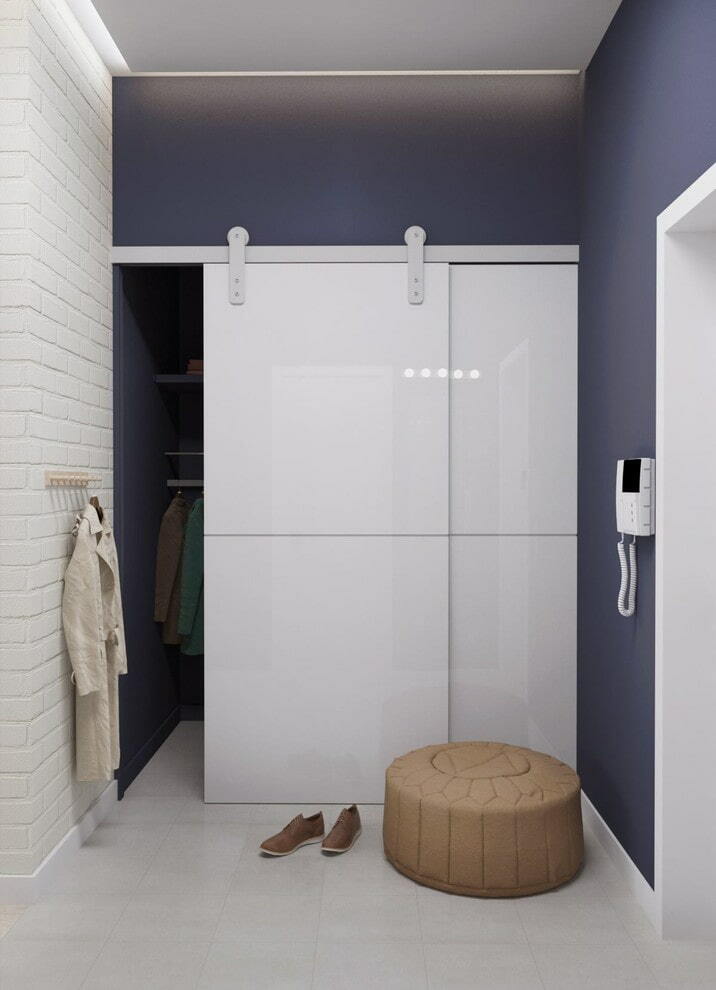
Plastic doors captivate with their lightness and affordable price, but they are easily scratched and require careful handling
For vertical partitions, drywall is used, the material is easily painted, pasted over with wallpaper, polymer film. Combined designs are made from several materials. The frame can be made of aluminum or steel. The rest of the partitions are plastic or polymer glass.
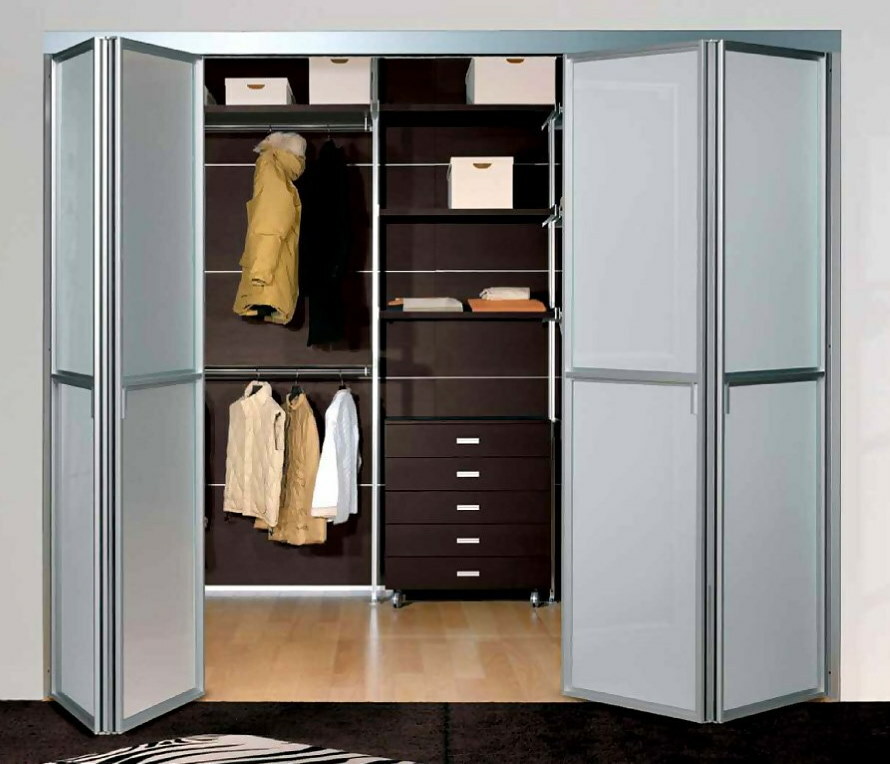
A metal frame is often used on sliding or folding doors
Transparent sliding polymer partitions with a matte pattern are considered a special chic.
Internal filling options
The filling of the corridor wardrobe largely depends on the size. When the room is small, they are limited to a barbell and open shelves. Complex structures are installed in a spacious room. Typically, these are systems of a standard type with upper, middle and lower zones.
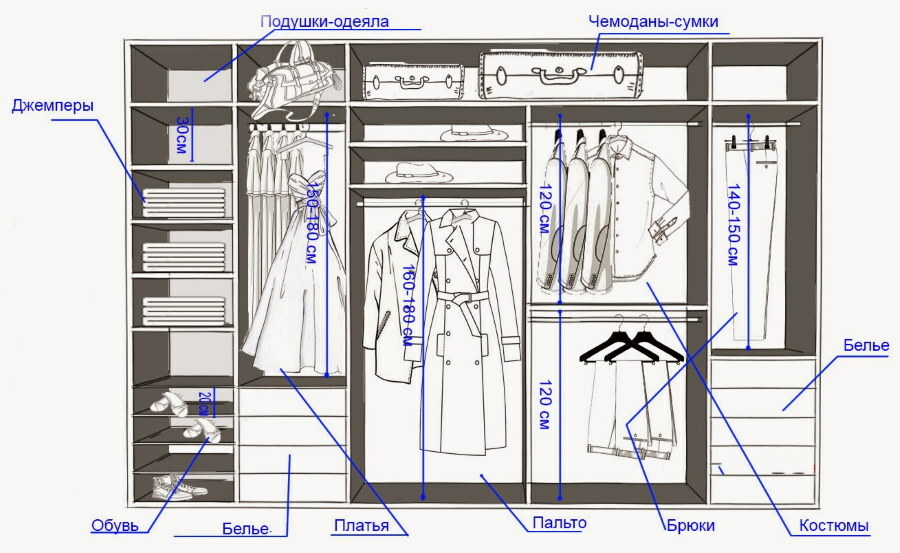
The options for internal filling must be thought out before arranging the wardrobe.
A variety of fastening mechanisms, filling modules expand the versatility of storage systems. Everyone can form a dressing room to their liking in a certain style.
Shelves
Additional bedding, linen, sports equipment, hobby equipment: hunting, fishing are often removed in the dressing room. Removable shelves are fixed at the desired height, it is practical to use a metal profile. Stationary sections are made for knitwear, warm clothes. To eliminate the risk of puffs, rupture of the hinges, the walls are smooth.
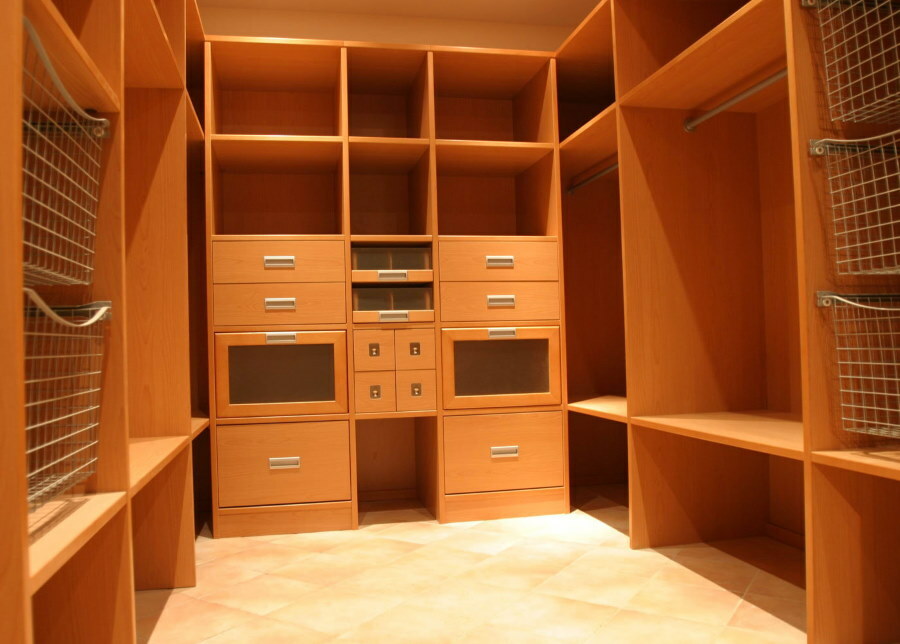
Open shelves usually fill the lower and upper tier of the dressing room.
The depth of the shelves depends on the corridor format. Owners of spacious housing in the middle zone can allow 60 cm. In narrow dressing rooms, the depth varies from 30 to 40 cm.
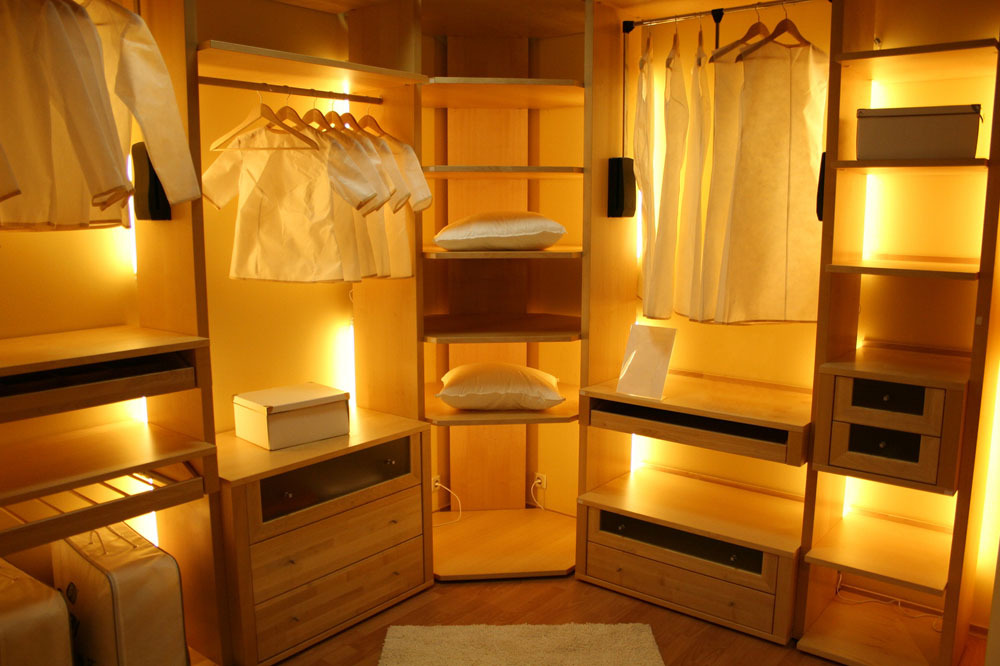
For more comfortable use of the wardrobe, built-in LED lighting is installed
The mezzanine in the upper part is best done as wide as possible, up to 80 cm. Such a shelf will hold a suitcase, ski suits. In the lower part, the shelves are made movable in order to push them to their full depth if necessary.
They produce units with folding and folding shelves that expand the capabilities of the storage system located in the corridor.
Boxes
It is easier to keep order when distributing items of clothing. In a narrow wardrobe located in the corridor, drawers are made at the entrance level so that it is convenient to slide the modules out to the full depth.
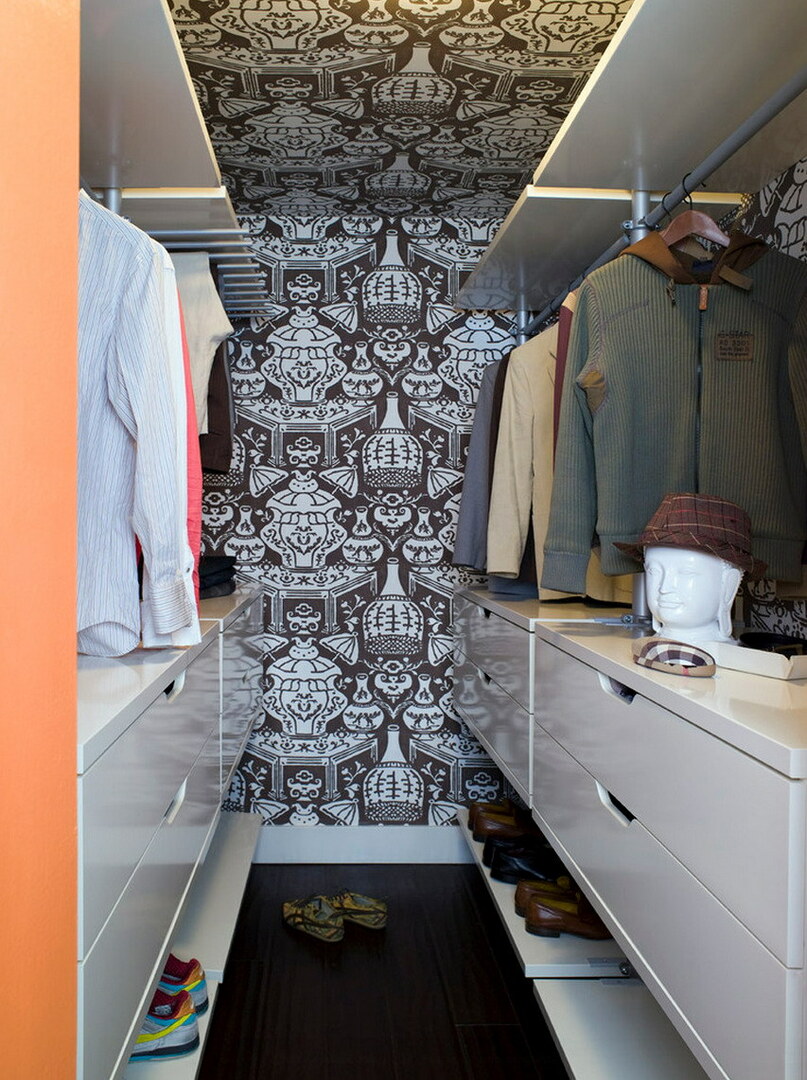
Small accessories and rarely used items are stored in closed boxes.
Drawers are essential for orderly storage:
- accessories;
- small things;
- underwear;
- stockings, socks, golfs, underfoot.
For the rational storage of things in shallow boxes, partitions are installed. Division into sectors, cells makes it easier to find the desired item of clothing.
An alternative to drawers is considered to be mesh structures on metal racks. Such retractable or tilting systems are equally convenient for pillows, blankets, underwear. The air is constantly circulating, things are ventilated. Shoes and tracksuits are often folded in grids.
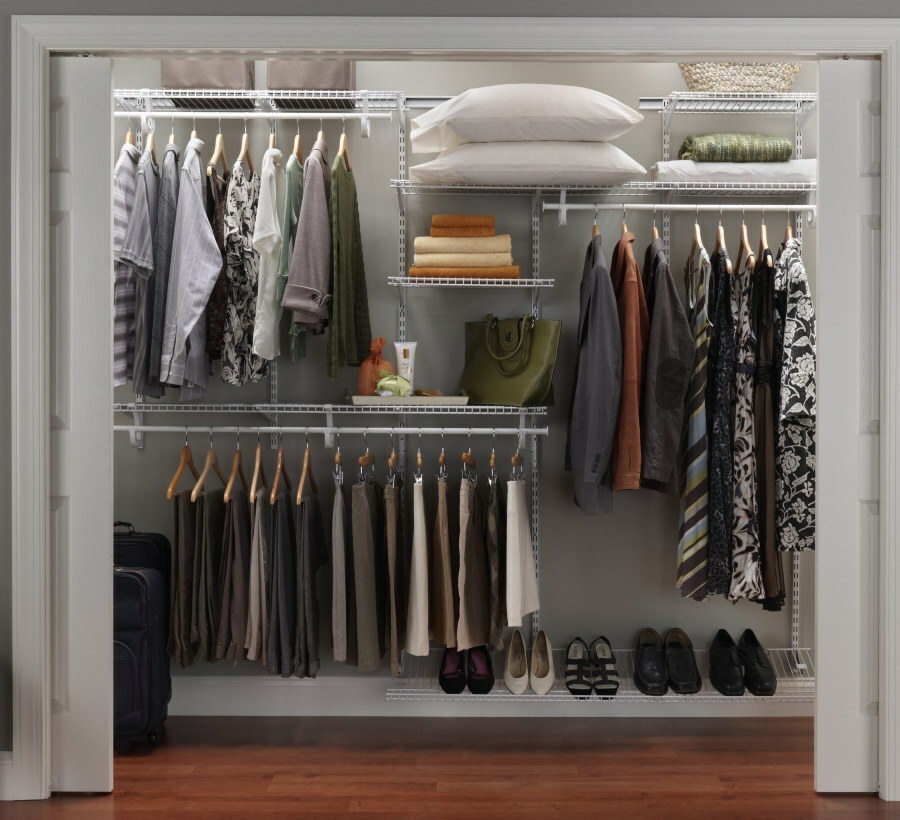
The mesh wardrobe is quite compact, does not weigh down the space and can be easily moved to another place if necessary
Hangers
For hangers, individual hooks are made or hanger bars of various designs are mounted. In a small dressing room, pull-out pantographs are appropriate for jackets, skirts, blouses. They should be in the upper zone. It is more rational to store long clothes separately from short ones.
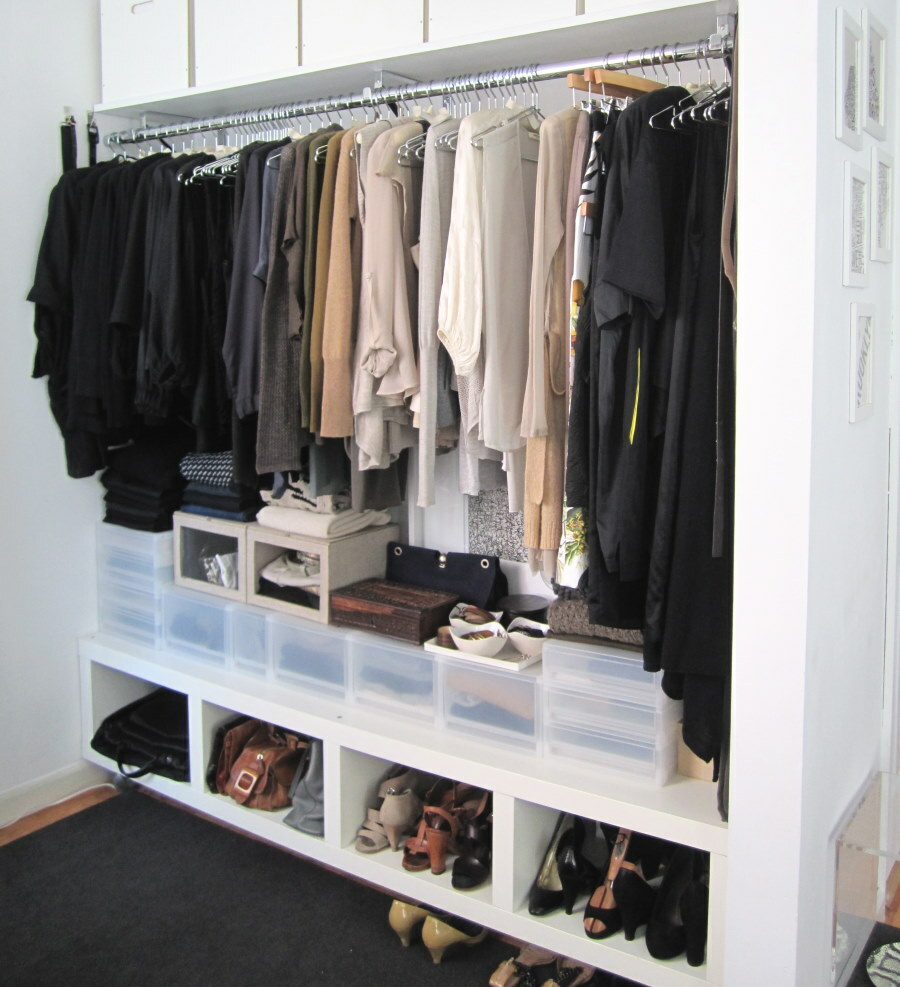
For hangers for outerwear, a middle tier is distinguished.
For a married couple, families with children, it is better to install several bars at different levels in the wardrobe. These can be stationary and sliding blocks. Seasonal outerwear is kept away from everyday wear.
Photos of dressing room design ideas in the corridor
Among the best design solutions are open-type options and closed systems. The dressing room in the corridor depends on the choice of style; in the photo, the design in light colors is appropriate in a loft, high-tech, and other modern style. Light colors are also chosen by adherents of Scandinavian interiors.

The photo shows an example of a wardrobe design in a Scandinavian-style corridor, where there is an open area for casual clothes and a closed system for seasonal storage.
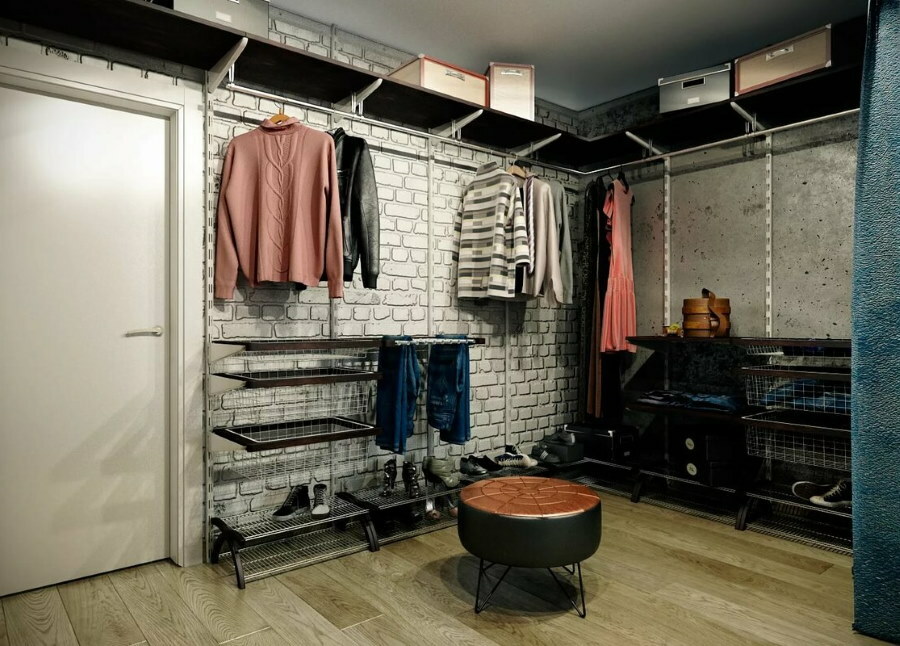
Open wardrobe in the loft style hallway
When men prevail among the inhabitants of the apartment, they install more shelves, low rods. Women's clothing requires full length barbell systems, tall drawers or boot compartments.
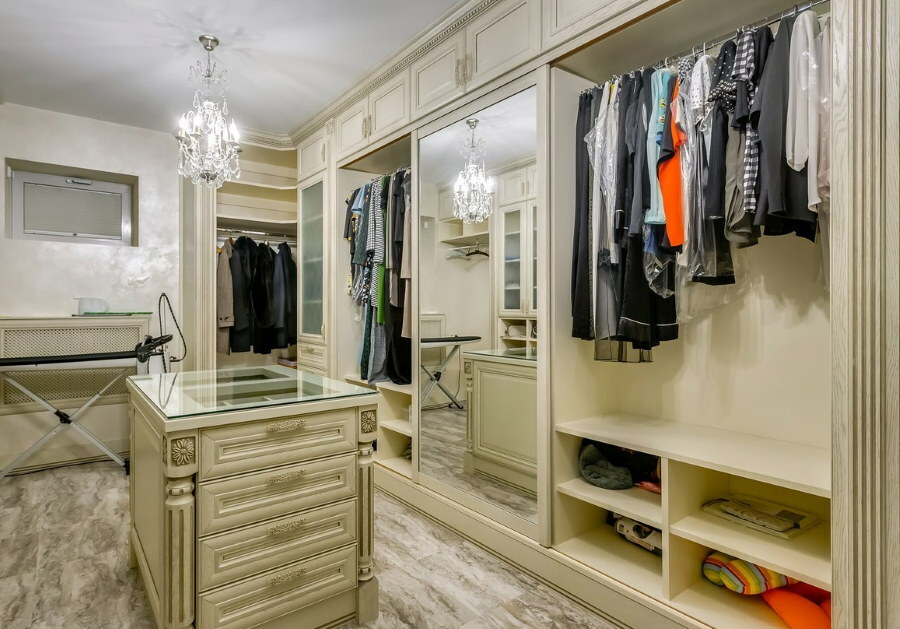
Separate dressing room decorated in classic style
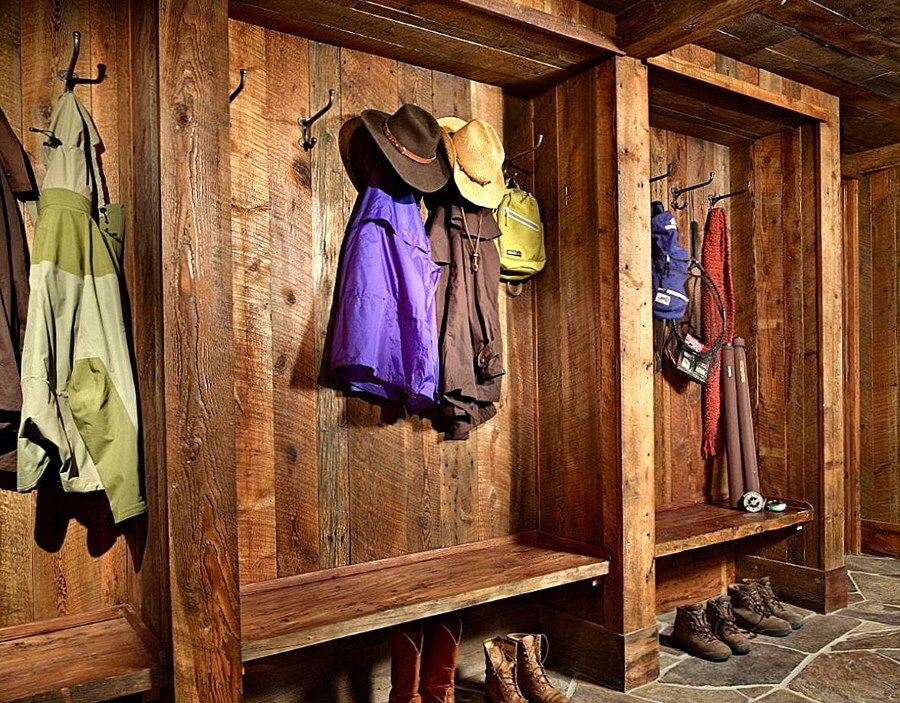
Rustic solid wood open wardrobe
Mirrored sliding doors will replace the corridor trellis. Internal illumination of the compartments makes it easier to find the things you need, creates coziness in the dressing room. The main thing is that the storage systems are mobile.



